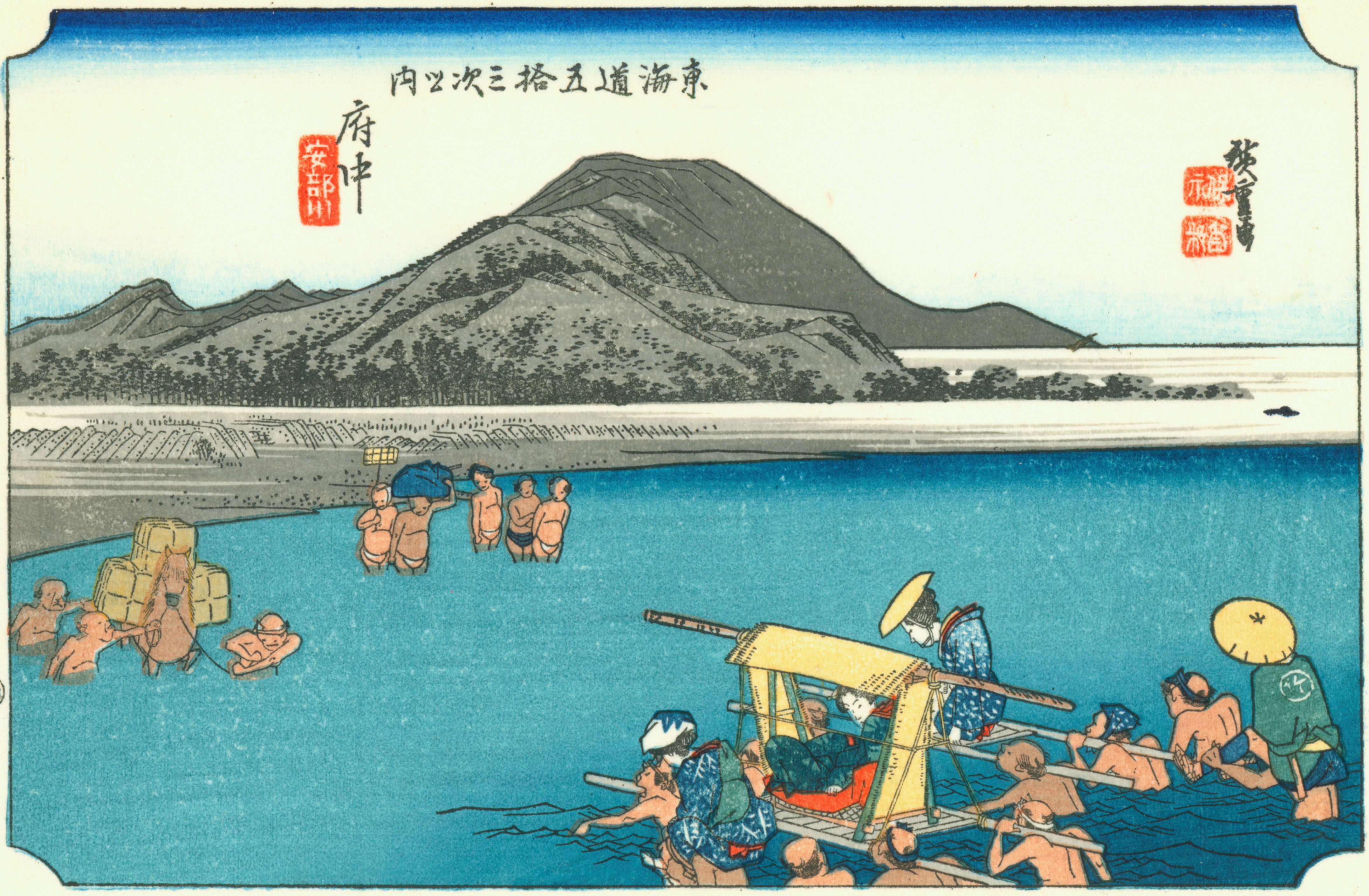Abe River on:
[Wikipedia]
[Google]
[Amazon]
 The is a Class A river in
The is a Class A river in
 The is a Class A river in
The is a Class A river in Shizuoka Prefecture
is a Prefectures of Japan, prefecture of Japan located in the Chūbu region of Honshu. Shizuoka Prefecture has a population of 3,555,818 and has a geographic area of . Shizuoka Prefecture borders Kanagawa Prefecture to the east, Yamanashi Pref ...
in central Japan
Japan is an island country in East Asia. Located in the Pacific Ocean off the northeast coast of the Asia, Asian mainland, it is bordered on the west by the Sea of Japan and extends from the Sea of Okhotsk in the north to the East China Sea ...
. It is long and has a drainage basin
A drainage basin is an area of land in which all flowing surface water converges to a single point, such as a river mouth, or flows into another body of water, such as a lake or ocean. A basin is separated from adjacent basins by a perimeter, ...
of . Approximately 170,000 people live in the basin area.
The river rises in the Akaishi Mountains
The are a mountain range in central Honshū, Japan, bordering Nagano Prefecture, Nagano, Yamanashi Prefecture, Yamanashi and Shizuoka Prefecture, Shizuoka prefectures. They are also called the , as they join with the Hida Mountains ("Northern Al ...
, which stretch over the boundary between Yamanashi and Shizuoka Prefectures, and flows into Suruga Bay
Suruga Bay (駿河湾, ''Suruga-wan'') is a bay on the Pacific coast of Honshū in Shizuoka Prefecture, Japan. It is situated north of a straight line from Omaezaki Point to Irōzaki Point at the tip of the Izu Peninsula and surrounded by HonshŠ...
in the Pacific Ocean
The Pacific Ocean is the largest and deepest of Earth's five Borders of the oceans, oceanic divisions. It extends from the Arctic Ocean in the north to the Southern Ocean, or, depending on the definition, to Antarctica in the south, and is ...
. It is known for its clear stream and forms part of the main water supply for Shizuoka city.
There are many hot spring
A hot spring, hydrothermal spring, or geothermal spring is a Spring (hydrology), spring produced by the emergence of Geothermal activity, geothermally heated groundwater onto the surface of the Earth. The groundwater is heated either by shallow ...
s at the river head, which is also known for its numerous landslide
Landslides, also known as landslips, rockslips or rockslides, are several forms of mass wasting that may include a wide range of ground movements, such as rockfalls, mudflows, shallow or deep-seated slope failures and debris flows. Landslides ...
s and for the Abe Great Falls, one of Japan's Top 100 Waterfalls. Unlike the nearby Tenryū River
The is a river in central Honshū, Japan. With a length of , it is Japan's ninth longest river.
Its source is Lake Suwa in the Kiso Mountains near Okaya in Nagano Prefecture. It then flows through Aichi Prefecture and western Shizuoka Prefec ...
and ĹŚi River, there are no dams on the Abe River.
Tokugawa Ieyasu
Tokugawa Ieyasu (born Matsudaira Takechiyo; 31 January 1543 – 1 June 1616) was the founder and first ''shōgun'' of the Tokugawa shogunate of Japan, which ruled from 1603 until the Meiji Restoration in 1868. He was the third of the three "Gr ...
carried out extensive construction and formed the present route of the lower course of the river. , a ''mochi'' rice cake dusted with kinako
''Kinako'' ( or "yellow flour") is roasted Soy flour, soybean flour, used in Japanese cuisine. In English, it is usually called "roasted soy flour". ''Kinako'' is mostly used as a topping to flavor rice cakes like mochi.
History
Usage of th ...
( soybean flour), has been a local speciality of this area since at least the Edo period
The , also known as the , is the period between 1600 or 1603 and 1868 in the history of Japan, when the country was under the rule of the Tokugawa shogunate and some 300 regional ''daimyo'', or feudal lords. Emerging from the chaos of the Sengok ...
.
The river's mouth is at .
References
Rivers of Shizuoka Prefecture Rivers of Japan {{Japan-river-stub